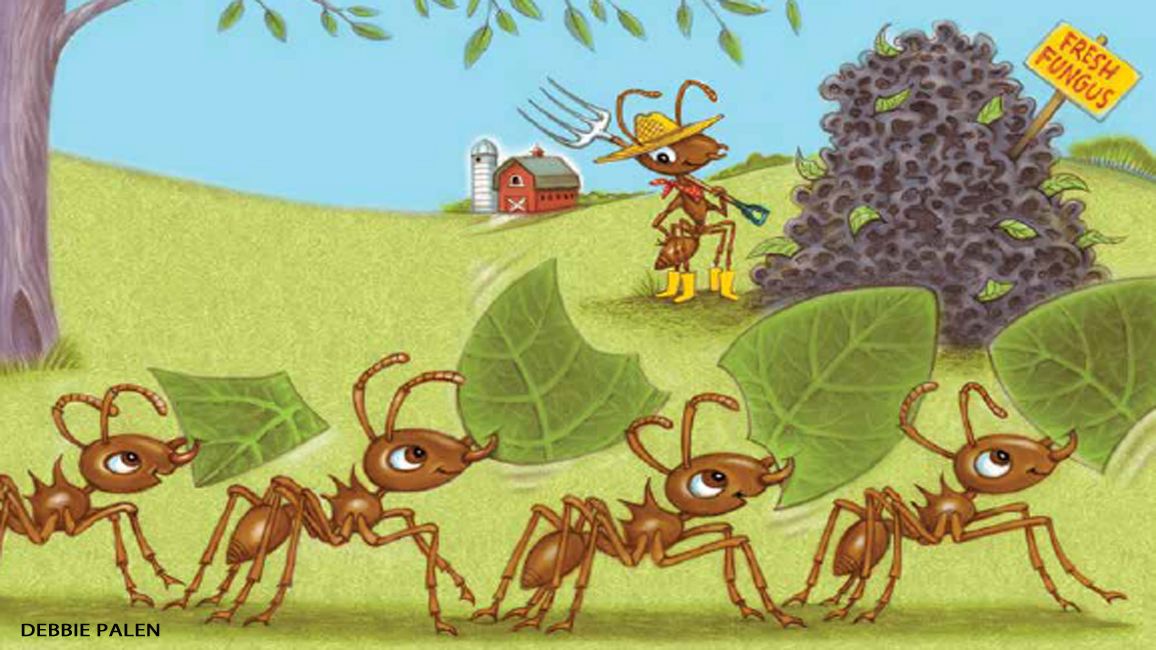
Animal Farmers
By Ellen Lambeth; Art by Debbie PalenFarmers raise livestock or crops for food. Now meet some animals that raise their own food, too!

FISHY FARMERS
Some kinds of damselfish have underwater gardens. They like eating a particular kind of seaweedy algae (AL-jee). When they find it, they take care of it. First, they “weed” out other kinds of algae, so only the “good” kind grows. Then they act as “scarecrows” to keep other creatures away from their gardens.
DAIRY ANTS
Dairy farmers herd cows and get milk from them. There are also some kinds of ants that herd tiny insects called aphids (AY-fidz) and “milk” them. The ants stroke the insects, causing them to poop out a sweet liquid called honey-dew, which the ants eat. In return, the ants protect the aphids from aphid-eating insects.
THESE SNAILS HOE ROWS
Little seaside snails called marsh periwinkles grow fungus as a crop. First, they use their rough tongues to “chew” grooves on the leaves of marsh grass. Then the snails poop there! That makes a nice, fertilized garden for a fungus to grow. Later on, the snails return to gobble up their “crop.”

TREE TUNNELERS
Ambrosia beetles tunnel into tree trunks. Then they go out and collect a fungus’s seed-like spores on their hairy bodies and under their legs. They use the spores to “plant” a woody garden inside the trunks. The fungus “eats” the wood as it grows, and the beetles eat the fungus.
LIVING GREENHOUSES
Spotted jellyfish are their own gardens. They spend as much time as possible near the sunny surface of the ocean. All that light helps plant-like algae grow inside their bodies. No need to look for a pantry or open a fridge—food is always right there.
LEAFY LANDSCAPERS
Leafcutter ants are hard-working gardeners. They go out and collect bits of leaves, carry them back to their colony’s nest, chew them up, and use them to grow a fungus garden. They add tiny living things called bacteria (bak-TEER-ee-uh) of a certain kind that keeps the fungus free of pests. Then they use the fungus for food.
UNDERWATER ARM GARDENERS
For deep sea-dwelling yeti crabs, it pays to have long, hairy arms. Ocean bacteria grow on the hairs. The crabs wave their arms around in the water. That supplies the bacteria with the food they need to grow. Then the crabs eat the bacteria off their arms.
















